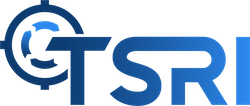Displaying items by tag: cloud migration
Taking a Low-Risk Approach to Mainframe Modernization — HUD
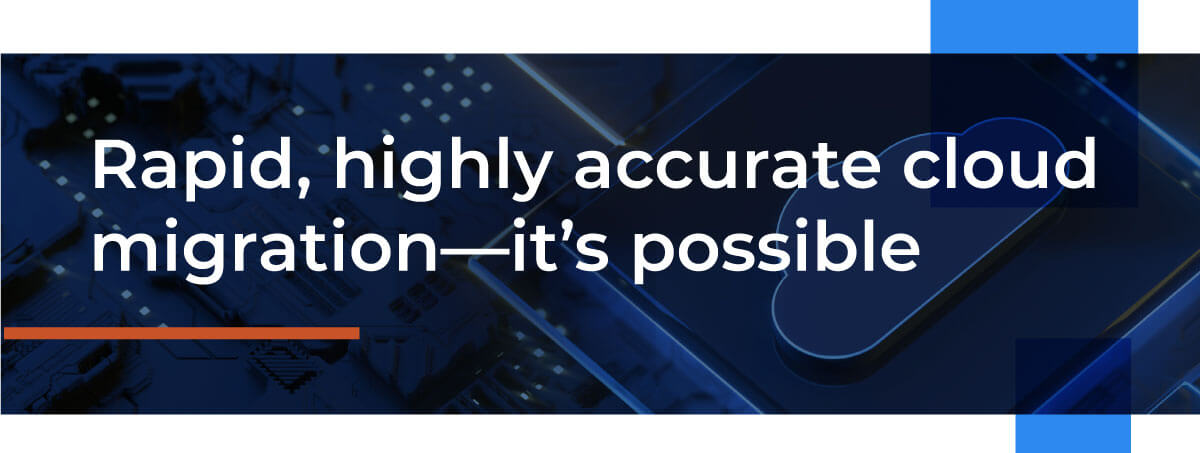
How do you transform the slow pace of technological innovation within a federal agency into an opportunity for innovation and IT systems modernization? Start by taking a cue from the partnership between TSRI and GovCIO. With backing from the Federal Government’s Technology Modernization Fund (TMF) our joint teams propelled the US Department of Housing and Urban Development (HUD) from an outdated twentieth-century Unisys COBOL system into modern, service-oriented Java that was performant and functionally equivalent.
TSRI worked with GovGIO on their process designed to successfully migrate the applications to the Microsoft Azure cloud. They started by defining the five key project goals and taking an inventory of system components, including intersecting platforms. Once we had identified what the unique technical challenges were and how to address each, we created testing strategies and migrated the data stores for each system. Finally, we executed an automated code conversion and refactored the legacy COBOL code.
TSRI’s partnership with GovCIO executed a rapid, holistic mainframe migration process for HUD that has improved their organizational performance while minimizing risk. On day one after the productions systems were switched over from the Unisys mainframe to the Microsoft Azure cloud, the new system supported 25,356 users and 299,715 transactions with only three user problems reported. These are the HUD systems that manage, store, and protect all the personal financial and employment-related eligibility information for FHA insured financing. Given the criticality of the data managed every day by HUD, it was important that the migration run without impact on operations. The result could be seen in the first 30 days during which the new system disbursed just over $2.7 billion dollars in HUD program funds without a single error.
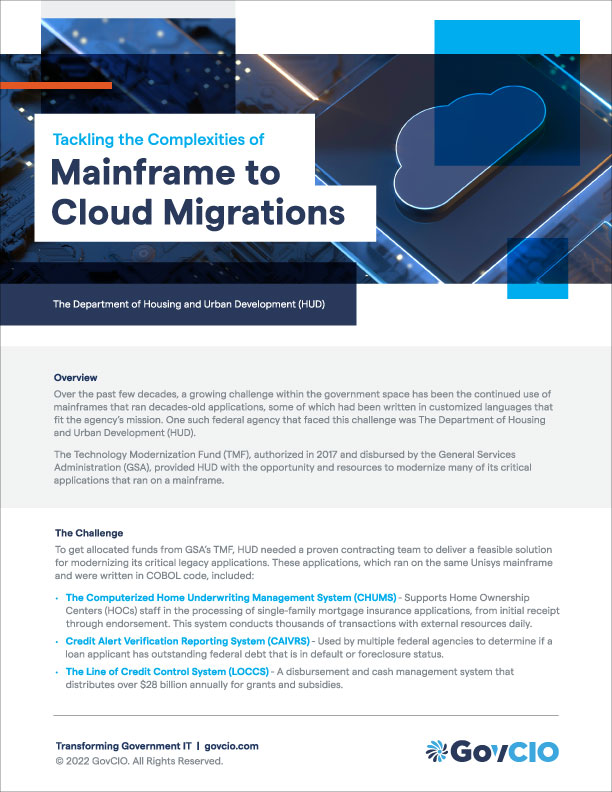 Review the details of how TSRI and GovCIO successfully executed this complex modernization project in our recently published case study.
Review the details of how TSRI and GovCIO successfully executed this complex modernization project in our recently published case study.
The 9 Low-Risk Steps That Led to Success
You might be surprised that HUD and other government agencies still run their IT on mainframes using COBOL (first released in the 1950’s), or MUMPS (from the 1970’s). Running on these aging platforms presents an extensive list of challenges to these agencies: data management, growing storage, collaboration, security, etc. The modernization process typically involves risk, time, and significant expense. It’s understandable that a large agency like HUD would want to select a partner they knew could deliver a low-risk, high-accuracy result.
Working together, we adhered to GovCIO’s nine-step best-practices process that resulted in modernizing systems to modern cloud architectures that can now evolve with HUD, while preventing negative impacts to their mission, day-to-day operations, and security.
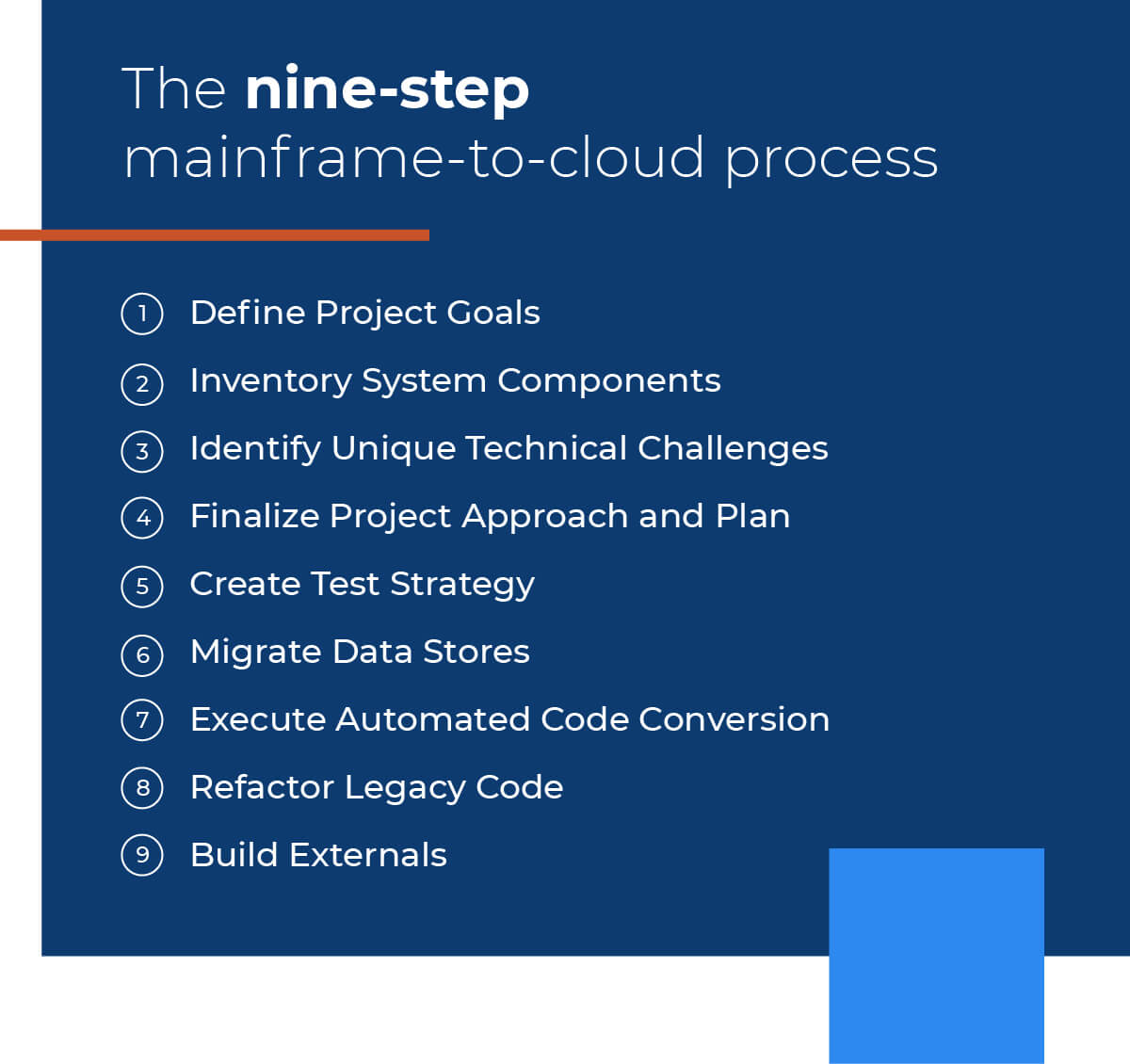
For more details on the nine-step process that enabled HUD to enter the cloud age, read our latest white paper with GovCIO.
A first-person account of HUD’s modernization process with Roger Knapp – Executive Vice President and HUD Program Manager
Only a few engineers know what it feels like to lead a major government agency through an automated mainframe modernization. Roger Knapp is one of them and has been working in the field for over 30 years. As Executive VP of Engineering & Service Delivery at TSRI, Roger has unique insights on the HUD project. He sat down to share them in an interview with GovCIO as part of their Partner Spotlight.
In a short chat, he shares how the TSRI-GovCIO team overcame the challenges not only of modernizing a nationally mission-critical system at risk of obsolescence, but also how to deal with the presence of dynamic SQL data in the legacy application logic.
Get the story straight from Roger in his interview with GovCIO.
TSRI is Here for You
As a leading provider of software modernization services, TSRI enables technology readiness for the cloud and other modern architecture environments. We bring software applications into the future quickly, accurately, and efficiently with low risk and minimal business disruption, accomplishing in months what would otherwise take years.
Video: Effectively Leveraging Today's Modernization Solutions for the Cloud
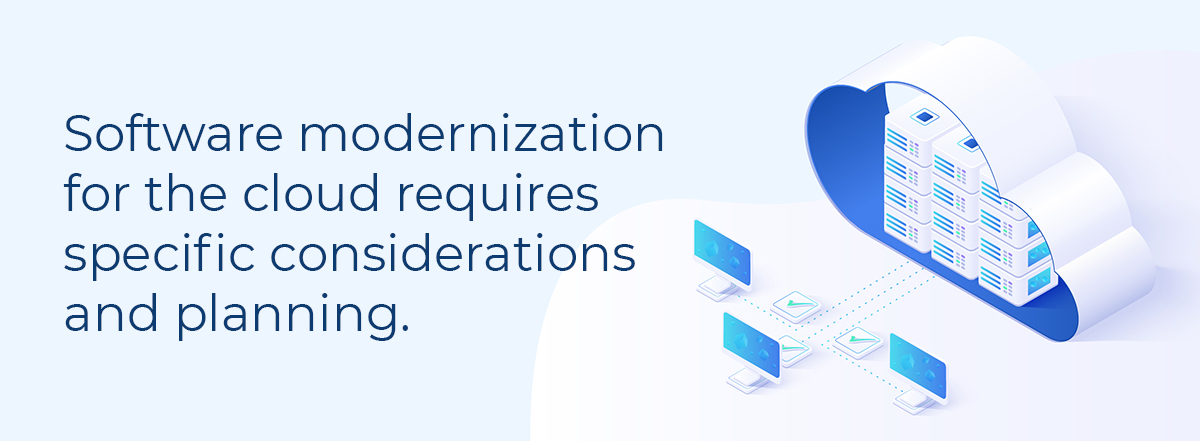
Learn tips to navigate the process in this presentation by TSRI’s VP of Product Development and Service Delivery, Scott Pickett.
Originally aired live on May 18, 2021.
Modernizing for the Future: Effectively Leveraging Today’s Modernization Solutions for the Cloud
Modernization efforts today that target cloud technologies require an understanding of the new environment up-front in the process. With a landscape of constantly evolving technology options, organizations looking to modernize their code, databases and UI, and move to the cloud are confronted with many considerations. The options are daunting, and the path to successful execution is not always clear.
Key Takeaways:
Gain important insights to successfully move beyond language modernization and support best practices for deployment in a cloud environment.
Learn about common benefits, challenges, and pitfalls in cloud migration and modernization.
Dive into the specifics associated with modernizing COBOL programs and the tools, services, and tech stacks required to support them in a modern environment.
---
TSRI is Here for You
As a leading provider of software modernization services, TSRI enables technology readiness for the cloud and other modern architecture environments. We bring software applications into the future quickly, accurately, and efficiently with low risk and minimal business disruption, accomplishing in months what would otherwise take years.
4 Tips for Modernizing with Minimal Business Disruption

Let’s face it. Change is hard. Sometimes, however, change is necessary. When it comes to modernizing mainframe systems that have been in service for decades — especially when considering the possible risks — change requires a lot of forethought.
Disruption to your organization’s business will likely be one of the biggest risk areas in question. These risks can run from prolonged periods that take your business offline to database synchronization between your existing and target applications. So how do organizations move forward with a much-needed modernization to the cloud or a hybrid on-premises solution without causing major disruptions or headaches to their business?
 Here are four tips to help you minimize business disruption risks:
Here are four tips to help you minimize business disruption risks:
1. Understand the scope of your modernization project.
Your organization may want to modernize your applications all at once, but more likely will consider a proof of concept. Great candidates for a proof of concept could be applications most critically in need of modernization, or less-utilized applications to demonstrate how a cloud or on-premises hybrid migration will holistically affect your overall systems portfolio. Understanding the application make-up and baselines of your existing applications will help uncover any additional services that may be required for a successful modernization and determine the target environment these applications will live on and language they use. Setting a realistic scope early on will give insight into which cloud services your applications can leverage, and the benefits associated with those services. Having a good understanding of the scope of the modernization before the work begins will eliminate surprises down the road as well and help prepare for subsequent steps in your organization’s modernization journey.
2. Consider a graceful migration and gradual roll-out.
With the right solution, your organization has the capability to migrate legacy systems one feature, one function, or even one API at a time. Both the existing and modernized applications can then coexist and run concurrently while maintaining or replicating the same data sources. One TSRI client actually operated in this state for over a year as we completed their modernization!
3. Put your services in the target environment under the control of your legacy environment.
Rather than remaking all of the thousands of processes that run to complete specific tasks, organizations can work on the new target environment following a code migration and create a “cloud agent” to enable the legacy mainframe system to run these processes. This temporary fix mitigates risk by eliminating the challenge of isolating problems in real time and allows organizations to move the processes from the legacy application.
4. Take advantage of automation.
Automated modernization processes eliminate the need for humans to rewrite tens (if not hundreds) of thousands of lines of code, which will inevitably introduce errors that need to be isolated and remediated. Manual rewrites can also take years. While human intervention is likely required at various points in an automated modernization, a programmer will need to touch less than .05% of a codebase, meaning issues can be remediated in hours or a few days rather than weeks. Read more about the advantages of automated modernization.
While any modernization will cause some level of disruption, a trusted partner with the experience, tools, and methods in place to migrate legacy systems will minimize risk and make your move to the cloud or a hybrid on-premises architecture as seamless as possible. An experienced, knowledgeable partner will also keep your business requirements top of mind. Remember, automated modernization and refactoring processes will update your code but do not change your business functions. Everything in your applications will perform exactly as they did prior to your modernization—and most likely better— and also enable your organization to leverage the benefits of cloud computing and the up-to-date processes modern systems offer.
---
TSRI is Here for You
As a leading provider of software modernization services, TSRI enables technology readiness for the cloud and other modern architecture environments. We bring software applications into the future quickly, accurately, and efficiently with low risk and minimal business disruption, accomplishing in months what would otherwise take years.
Virtual Event on May 18: Modernizing for the Future
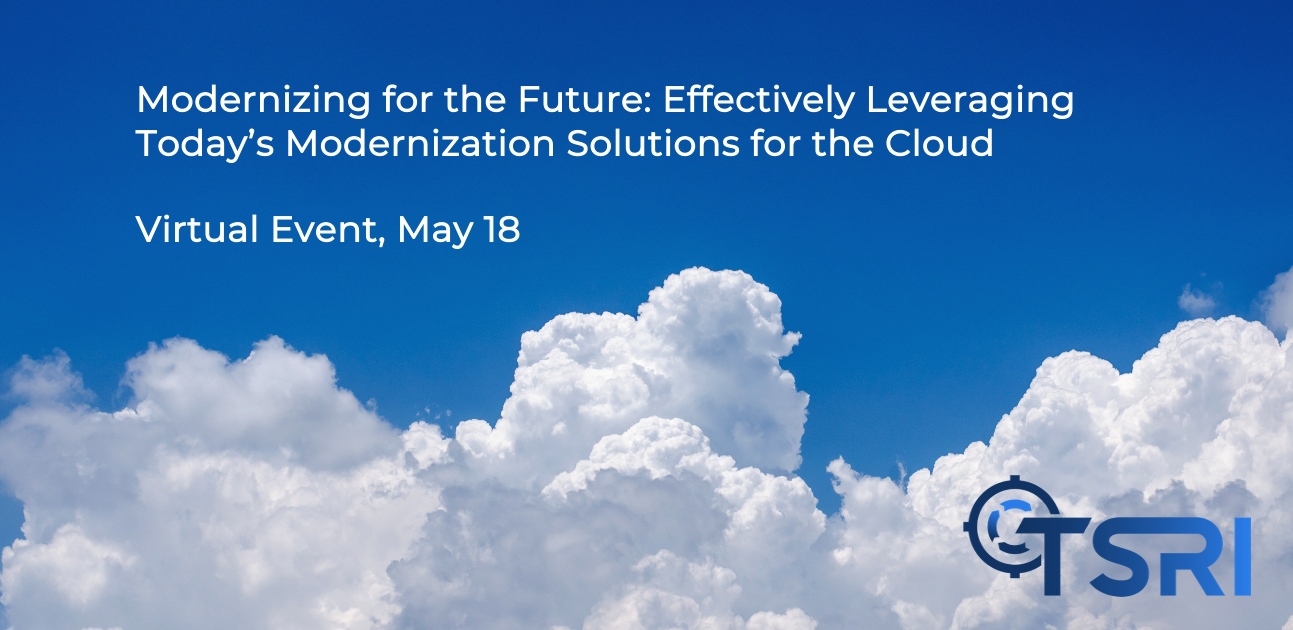
Any organization undergoing a modernization needs to understand the new environment they will be moving to. When it comes to cloud migration, the path to successful execution is not always clear.
TSRI’s VP of Product Development and Service Delivery, Scott Pickett, will lead a live virtual session to help organizations work through the benefits and challenges of modernizing for the cloud. Scott will reference case studies from many of the successful cloud migrations he and his team at TSRI have undertaken.
Modernizing for the Future: Effectively Leveraging Today’s Modernization Solutions for the Cloud
Tuesday, May 18 at 11:00am (PDT)
In this session, Scott will explain what the landscape of constantly evolving technology options means for organizations looking to modernize their code, databases, and UI as they move to the cloud. While the options at first may seem daunting, the insights Scott has gathered from many years in the field and numerous successful modernization and cloud-migration programs will ease a lot of anxiety among both business and IT professionals.
Scott’s session will be presented virtually with a live Q&A. Don’t miss your chance to attend this value-packed session!
Some key takeaways you can expect from Scott in this session:
- Gain important insights to successfully move beyond language modernization and support best practices for deployment in a cloud environment.
- Learn about common benefits, challenges, and pitfalls in cloud migration and modernization.
- Dive into the specifics associated with modernizing COBOL programs and the tools, services, and tech stacks required to support them in a modern environment.
Register now to participate on May 18 for this live-streaming event!
-----------
TSRI is Here for You
As a leading provider of software modernization services, TSRI enables technology readiness for the cloud and other modern architecture environments. We bring software applications into the future quickly, accurately, and efficiently with low risk and minimal business disruption, accomplishing in months what would otherwise take years.
COBOL to C# - Retail Client
A $39 billion clothing retailer with 4,300 stores worldwide sought to modernize its suite of mainframe COBOL supply chain applications. These applications supported the client’s unique business process, which provided them with a major competitive advantage and fueled years of unprecedented growth. Today, the clients business logic was preserved and their services are hosted on Azure with data integration directly through service bus queues and scheduling handled via Logic Apps.
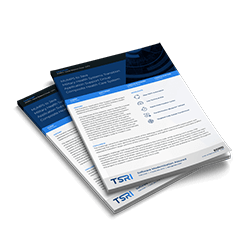 |
Customer: Retail Client Source & Target Language: COBOL to C# Lines of Code: 86,000 Duration: 3 months Services: Code Transformation, Automated Refactoring, Testing and Implementation Support, Transformation Blueprint®
|
Cloud Migration and Containerization: 3 Steps to Reduce Risk and Ensure Success
Nearly everyone wants speed, efficiency, and accuracy—especially when it comes to software applications. As companies modernize their legacy codebases and migrate to the cloud, one of the best ways to achieve top performance is to create containers for modernized code.
 Code modernization has become increasingly important as we move toward integrated cloud-based and virtualized software environments. While the original legacy code was written to meet the needs of the business at that moment time, modernization of code permits these legacy applications to meet the needs of today’s organization while retaining the integrity of the original business logic. Software developers can then focus on innovation rather than maintenance. Modernization makes it possible to meet the demands of today's infrastructure requirements without high cost or compromises in security or functionality. Companies looking to expand services, access improved processes, and use resources more efficiently will need architectural changes. Bringing these trends together, containerization under Docker and Kubernetes has created a new model for application deployment that provides numerous advantages to program operation and interoperability but requires special accommodation.
Code modernization has become increasingly important as we move toward integrated cloud-based and virtualized software environments. While the original legacy code was written to meet the needs of the business at that moment time, modernization of code permits these legacy applications to meet the needs of today’s organization while retaining the integrity of the original business logic. Software developers can then focus on innovation rather than maintenance. Modernization makes it possible to meet the demands of today's infrastructure requirements without high cost or compromises in security or functionality. Companies looking to expand services, access improved processes, and use resources more efficiently will need architectural changes. Bringing these trends together, containerization under Docker and Kubernetes has created a new model for application deployment that provides numerous advantages to program operation and interoperability but requires special accommodation.
Containers provide consolidation benefits by permitting application instances to be stacked in larger virtual machines. Containerization improves efficiency, security, and reduces software licensing. It reduces complexity and ensures application portability, but the boost to protecting an organization’s systems at a time when only 56% of companies are integrating security into their technology strategies cannot be understated, according to Advanced’s 2020 Digital Business Report.
To take advantage of not just the security inherent to containerization, but the potential of having systems that can be ready for the next big advances in computing, applications must be modernized to externalize APIs and microservices. It is also important to ensure proper function within a containerized environment. Modernization transforms legacy applications to operate efficiently, reliably, and securely within the new environment with identical performance to the original application.
The Three-Step Approach: Transform, Cloud-Enable, Containerize & Deploy
When thinking about modernization, organizations can take a three-step approach based on TSRI’s experience in all forms of legacy code transformation, including migration to cloud services and containerization, to reduce risk and increase success:
1. Migrate legacy monolithic code to a service-oriented environment. This includes updating language from COBOL to Java, JavaScript, or C#, changing databases, and enabling microservices. At this step of the process, the migration also begins to abstract underlying services from the application.
2. Integrate service-oriented applications with native cloud services. This includes re-orienting code from WebSphere, DB2, or other legacy platforms to Apache Tomcat, Amazon RDS, or other modern platforms, for example. Upgrading to incorporate the latest native architectural interfaces ensures that applications will tightly integrate with the new environment, and ensures easier updates in future.
3. Transform native cloud to Docker containers. The movement to containers provides additional architectural abstraction and improved integration of applications within the cloud.
As with any kind of migration and modernization, organizations need to assess, tune and optimize their applications for suitability and to ensure that applications will perform adequately within the container environment without infrastructure issues that might arise from coding anomalies.
The key to a successful migration is to evaluate and model the underlying legacy code logic and to pinpoint the areas that require adaptation to the new environment. Not every application has a natural and hazard-free path to a cloud-based containerized solution. Knowledge of container operations such as ephemeral storage and parallelization issues is extremely important in managing this transition. The transformed code must also be optimized to meet the needs of its new environment.
In the case of migrating and modernizing mainframe systems to the cloud, fully automated refactoring technologies such as TSRI’s JANUS Studio® toolset transform legacy applications to cloud-native applications for containerized deployment on multiple cloud providers, including a practice devoted specifically to AWS. TSRI’s model-based solution transforms even large legacy systems written in languages such as COBOL, Fortran, PowerBuilder, Ada, MUMPS, and VB6 into modern applications in cloud-native target architectures.
-------
TSRI is Here for You
As a leading provider of software modernization services, TSRI enables technology readiness for the cloud and other modern architecture environments. We bring software applications into the future quickly, accurately, and efficiently with low risk and minimal business disruption, accomplishing in months what would otherwise take years.
Get started on your modernization journey today!
